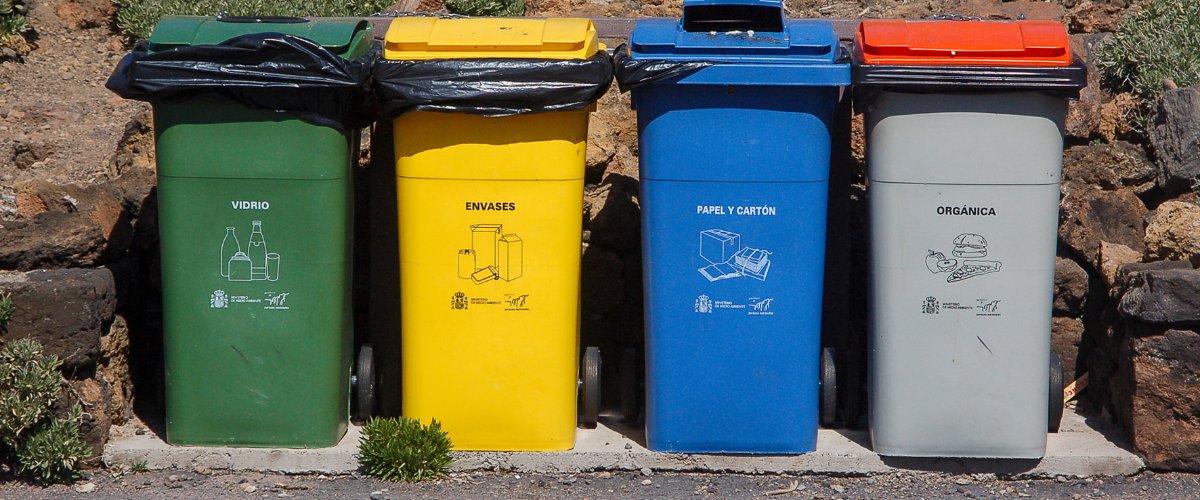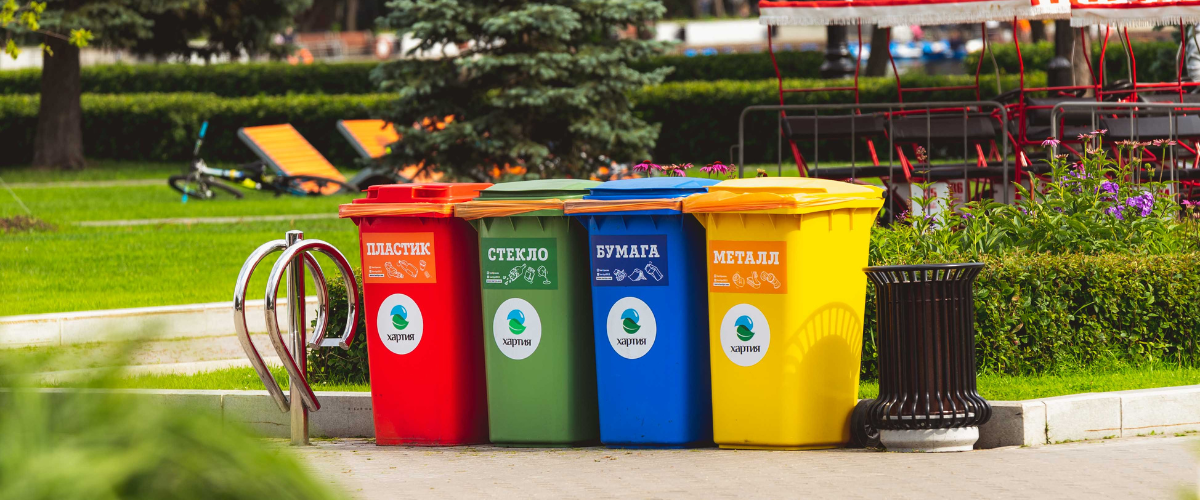
Top 5 Most Dangerous Bacteria Found in Trash Cans
Trash Trouble Five Dangerous Bacteria Lurking in Your Can
Ever wondered what might be lurking at the bottom of your trash can? It's not just about unpleasant odors or sticky residues—it's the dangerous bacteria that pose real threats to health and the environment. It's crucial to understand how these microorganisms make their home in your waste bins and the potential risks they present.
In this blog post, we'll explore the top five most dangerous bacteria commonly found in trash cans, how to identify them, and steps you can take to keep both your home and the environment safe. Whether you're a homeowner, an environmentalist, or just conscious about health, maintaining trash can hygiene is more important than you might think. Read on to discover why clean trash cans are essential for a healthy living space and ecosystem.

The Top 5 Most Dangerous Bacteria Found in Trash Cans
Salmonella
Salmonella is one of the most notorious bacteria associated with foodborne illness. Commonly found in raw poultry, eggs, and unprocessed milk, it can easily find its way into your trash. Once there, it thrives in the warm, moist environment, posing a risk to anyone who comes into contact with the trash can.
Scientific studies indicate that salmonella can survive for weeks in a trash can environment, leading to symptoms like diarrhea, fever, and abdominal cramps if ingested. According to the CDC, salmonella causes approximately 1.35 million infections annually in the United States alone.
Escherichia coli (E. coli)
E. coli is another bacterium that often resides in household trash cans, especially those that contain raw meats and certain vegetables. While not all strains are harmful, the pathogenic types can cause severe gastrointestinal distress.
A study by the Harvard School of Public Health found that E. coli can live for several days on various surfaces, including those in a trash can. This bacterium's presence highlights the importance of properly disposing of food scraps and maintaining trash can cleanliness.
Listeria monocytogenes
Listeria is a bacterium that can grow in cold environments, making it particularly dangerous. Found in certain processed foods and unpasteurized dairy products, listeria can lead to serious infections, especially in pregnant women and immunocompromised individuals.
According to a report from the World Health Organization, listeria has a high mortality rate compared to other foodborne pathogens. Its presence in trash cans underscores the need for rigorous hygiene practices, even after leftovers are disposed of.
Staphylococcus aureus
Commonly known as staph, Staphylococcus aureus is found in the human respiratory tract and on the skin. It can enter your trash can through discarded tissues, hygiene products, or contaminated food.
This bacteria can cause a range of illnesses, from minor skin infections to life-threatening diseases. The CDC notes that staph bacteria can live on surfaces for days, making it a persistent threat in dirty trash cans.
Clostridium botulinum
Clostridium botulinum is a less common but highly dangerous bacterium found in trash cans. It’s known for producing a toxin that causes botulism, a rare but serious illness. Improperly canned foods and expired products can harbor this bacterium.
Botulism affects the nervous system and is considered a medical emergency. While rare, its potential presence in trash cans should not be overlooked. Proper disposal of spoiled foods and regular trash can maintenance are crucial preventive measures.

How to Identify Bacteria in Your Trash Can
Identifying bacteria in your trash can might seem daunting, but there are practical ways to recognize potential growths without a microscope.
Odor Detection
A foul smell emanating from your trash can isn't just unpleasant—it's a clear sign of bacterial activity. Bacteria break down organic matter, releasing gases that contribute to bad odors. If your trash can smells worse than usual, it's time to investigate further.
Visual Inspection
Look for discoloration or mold growth on the inside surfaces of your trash can. While mold itself is not a bacterium, its presence indicates a hospitable environment for bacterial growth. Regular visual inspections can help you catch signs of bacterial colonization early.
Surface Feel
If the interior surface of your trash can feels slimy, it could be due to biofilm—a layer of bacteria and organic material. This sliminess suggests a buildup of bacteria that needs to be addressed promptly to prevent further contamination.
Steps to Properly Clean and Disinfect Your Trash Can
Maintaining a clean trash can is essential for preventing the spread of dangerous bacteria. Here’s a step-by-step guide to ensuring your trash can stays hygienic.
Empty and Rinse
Begin by emptying your trash can completely. Rinse it with water to remove any loose debris. This initial rinse helps prepare the surface for more thorough cleaning, reducing the amount of dirt you’ll need to tackle later.
Apply Cleaning Solution
Use an environmentally friendly cleaning solution to scrub the interior and exterior of the trash can. Ingredients like vinegar and baking soda make effective and non-toxic cleaners. These solutions break down grime without harming the environment or your health.
Disinfect Thoroughly
Disinfecting is crucial for killing bacteria. Use a solution that's specifically designed to eliminate germs, such as hydrogen peroxide or ethanol-based cleaners. Spray the disinfectant thoroughly and allow it to sit for a few minutes before rinsing it off.
The Link Between Clean Trash Cans and Environmental Health
Maintaining clean trash cans doesn’t just benefit your home—it plays a significant role in environmental health as well.
Local Ecosystems
Bacteria from trash cans can infiltrate local ecosystems when trash is improperly disposed of or left uncovered. This can lead to soil and water contamination, affecting plant and animal life. By keeping trash cans clean, you’re helping to protect these delicate ecosystems.
Air and Water Quality
The bacteria in trash cans can release harmful gases and leach chemical residues into the air and water. Over time, this contributes to air pollution and deteriorating water quality, impacting community health. Clean trash cans help mitigate these effects by reducing the bacterial load.
Waste Management
Properly maintained trash cans improve the efficiency of waste management systems. When bacteria levels are kept low, trash is less likely to rot and emit noxious gases during transport and processing. This, in turn, reduces the environmental footprint of waste management operations.

Tips for Maintaining a Clean and Bacteria-Free Trash Can
Keeping your trash can clean is an ongoing task that requires commitment and consistency. Here’s how you can make it a habit.
Regular Cleaning Schedule
Establish a routine for cleaning your trash can. Aim for a deep clean at least once a month, with spot cleaning as needed. Consistency is key to preventing bacterial buildup and ensuring a sanitary environment.
Use Trash Liners
Liners act as a barrier between the trash and the can, preventing leaks and spills. Make sure to replace the liner regularly, especially if it becomes torn or contaminated. A good-quality liner can significantly reduce the risk of bacteria spreading.
Avoid Food Residue
Before disposing of food waste, scrape off excess residue to minimize bacterial growth. This simple step can make a big difference in reducing odor and preventing bacteria from thriving in your trash can.
Conclusion
The presence of dangerous bacteria in trash cans is a health and environmental concern that cannot be overlooked. By understanding the types of bacteria that may lurk in your trash and taking proactive steps to maintain cleanliness, you can safeguard your home and contribute to a healthier ecosystem.
A clean trash can is more than just a household chore—it's a responsibility that impacts community health and environmental stability. Implementing regular maintenance routines and using eco-friendly cleaning solutions are effective strategies to prevent bacterial growth.
Share this knowledge with others and encourage them to prioritize trash can hygiene. Together, we can make a significant impact on public health and environmental preservation. Remember, a cleaner trash can today leads to a healthier tomorrow.
If you live in Arizona and you are interested in trash bin cleaning services, contact us at 602-228-6108.
